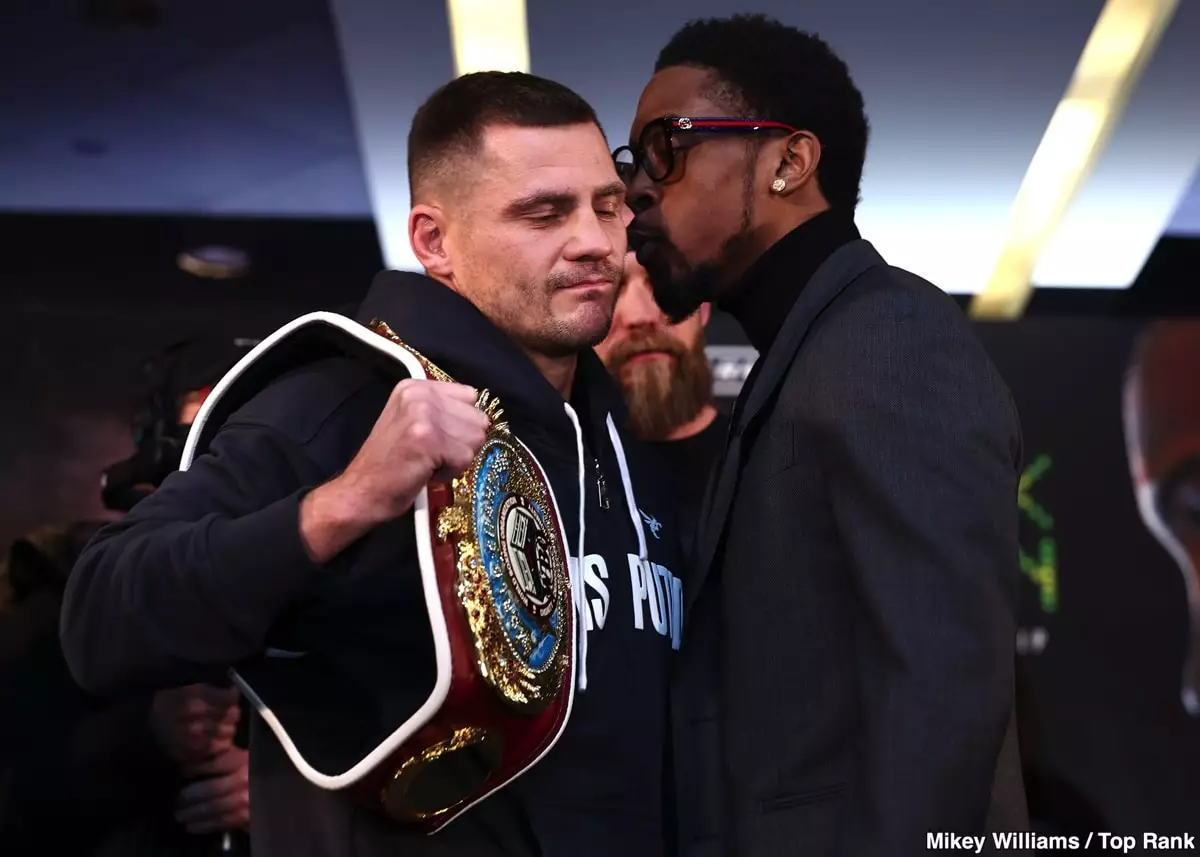In the sphere of professional boxing, where the battles are often waged outside the ring as much as within it, the feud between Keyshawn Davis and WBO lightweight champion Denys Berinchyk takes center stage. An incident involving an unsettling gesture—a box of fruits, notably watermelons and bananas—has sparked a backlash from Top Rank, the promotional company representing Davis, intensifying the racial undertones associated with the sport. This incident serves as a reminder of how perception, media narratives, and promotional interests intertwine in the high-stakes world of boxing.
Top Rank’s official statement expressed their “appallment and disgust” toward those responsible for sending the fruit basket to Davis in the lead-up to a crucial press conference. The insinuation behind such a delivery carries deep historical baggage, as these fruits have been historically weaponized in racial stereotypes. While the company’s disapproval was unmistakable, it did not address the accusations made by Davis, who claimed Berinchyk orchestrated this act as a form of racial disrespect. This silence raises questions about the social responsibilities of promotional companies and the accountability they hold in situations steeped in racial tensions.
Davis’s accusation, calling Berinchyk a “racist” without substantiating the claim, not only muddied the waters of their upcoming fight but also drew attention to the broader implications of labeling individuals as such in a public domain. The act of labeling someone a racist can have debilitating effects on their career and reputation, reminiscent of the prevalent issues of cancel culture. It beckons the question: does the backlash against Davis’s allegations serve as a disincentive for future athletes to speak out about such issues?
A Heated Press Conference: Media Scrutiny and Moral Accountability
During the press conference, Davis elevated the rhetoric, dragging Berinchyk’s name through the mud by labeling him a racist again and again. This aggressive stance towards his opponent not only set an unprofessional tone for the upcoming battle but also showcased a potential double standard within the sport. Had the roles been reversed and Berinchyk accused Davis of racism in front of the press, how would the narrative have shifted? This thought experiment underlines the vulnerability of athletes, particularly in emotionally charged environments, where they are often left undefended by their promoters.
Top Rank’s decision to avoid commenting on the accusations aimed at Berinchyk can be interpreted as an implicit endorsement of Davis’s stance or perhaps a fear of engaging in a controversy that stretches beyond boxing. It reflects a broader trend observed in sports, where entities hesitate to engage in discussions about race, preferring instead to shield athletes from backlash or discussions that could polarize their audience.
In terms of the upcoming fight between Davis and Berinchyk, conversations among trainers and analysts have been sweeping. Brian ‘BoMac’ McIntyre, who trains Davis, has been vocal about his fighter’s capabilities. He emphasizes that Davis should continue to focus on his boxing skills rather than being sidetracked by external controversies. “He knows how to box, and he knows how to fight,” he stated, shedding light on the technical aspects and preparation necessary for success in such a high-stakes match.
Extricating oneself from the distractions of media narratives and public opinions can be challenging for any athlete. As McIntyre noted, a victory would lead Davis into a higher rank of contenders, potentially clashing with established names like Gervonta “Tank” Davis. However, questionable tactics, such as avoiding certain fighters, have raised eyebrows regarding Davis’s commitment to taking on the best in the division.
The Weight of Choices: Navigating Division Politics
Keyshawn’s physical presence in the ring often leads to debates about weight advantages. Observers note that he often appears much larger than many of his contemporaries, drawing accusations of being a “weight bully.” This discussion is reflective of the broader dynamics at play in boxing, where size and weight can translate into significant advantages during fights. McIntyre advises that Davis should capitalize on his current weight class for maximum leverage, avoiding premature moves to higher divisions where he may face formidable opponents.
The interplay between racial perceptions, media narratives, and the physical dynamics of boxing highlights the complexity and multifaceted nature of the sport. Upcoming bouts, especially those steeped in controversy, will continue to shape the narratives that define not just the athletes involved but also the very fabric of boxing culture in the years to come. The challenge remains for athletes and promoters alike to navigate these turbulent waters with both care and integrity. As for Davis and Berinchyk, their journey onto the ring will be watched as much for their athletic prowess as for the storylines that continue to surface beyond their shared competitive spirit.

